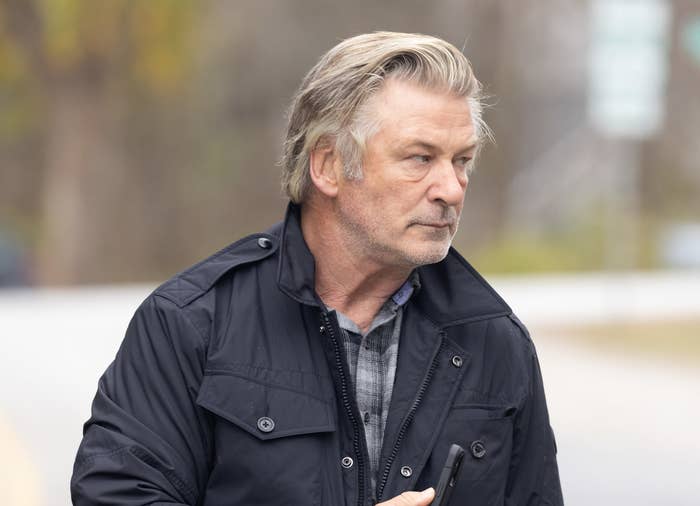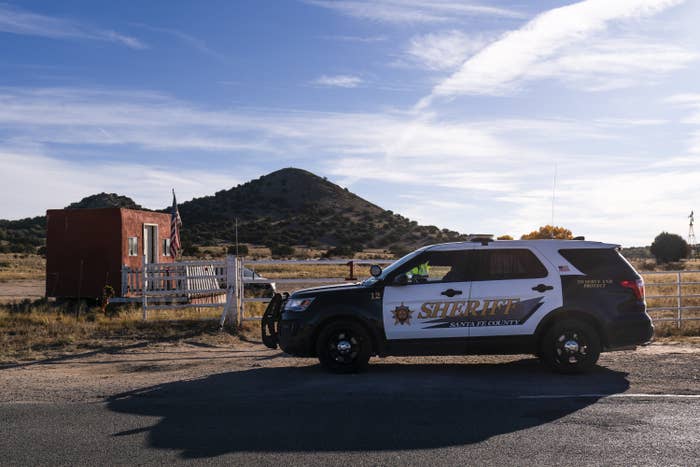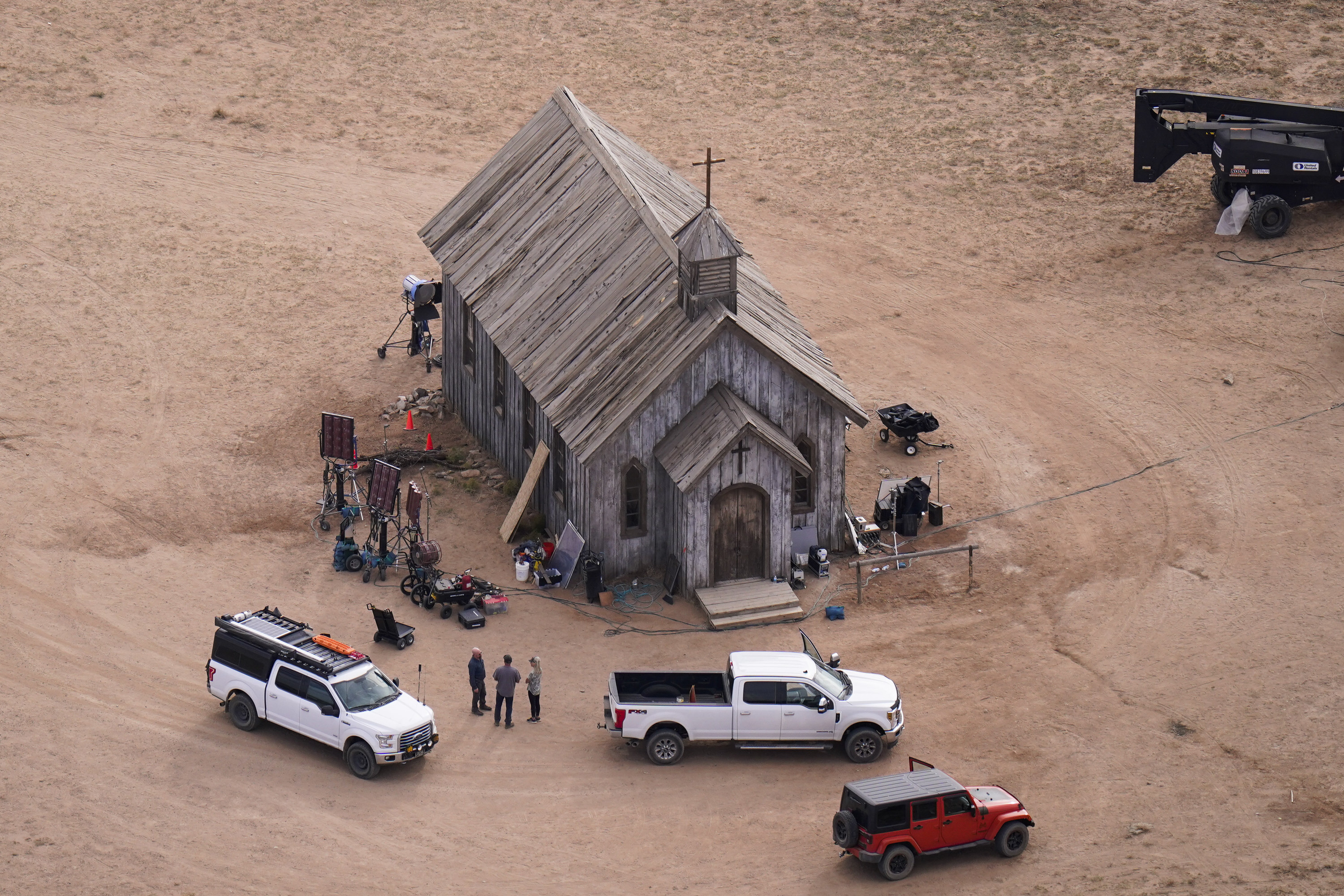
Live and "dummy" rounds may have been mixed together in a box, potentially even bearing the same manufacturer’s logo, on the set of Rust before Alec Baldwin accidentally shot and killed cinematographer Halyna Hutchins, according to documents released by the Santa Fe County Sheriff’s Office on Tuesday.
Since the Oct. 21 shooting, investigators have been trying to piece together how live ammunition, which should not be on a movie set, wound up in the Colt .45 that was handed to Baldwin during a rehearsal at the Bonanza Creek Ranch in Santa Fe. A search warrant released on Tuesday showed that investigators are seeking documents related to equipment and ammunition used on the low-budget Western, employee work contracts, and all ammunition used or stored for the film as well as the boxes in which it was kept.
A detective’s affidavit supporting the search warrant also provides new information based on interviews with Hannah Gutierrez-Reed, the armorer tasked with overseeing the weapons on set who has come under scrutiny for her limited experience, as well as Thell Reed, her father and a well-known armorer, Sarah Zachry, the Rust prop master, and Seth Kenney, who owns a weapon and prop rental company in Arizona and acted as a mentor figure to Gutierrez-Reed. The search warrant for Kenney's Albuquerque business mentions that Kenney, who was not on set, supplied some of the ammunition for the production and that the Reeds had told investigators the live rounds might have come from him.

Gutierrez-Reed, the 24-year-old armorer, told investigators that she and Zachry had checked and loaded the guns earlier in the day and did not thoroughly scan them again after the crew had broken for lunch around 12:30 p.m. Gutierrez-Reed said she put five dummy rounds into the long-barrel Colt .45, which Baldwin would eventually use to accidentally kill Hutchins and injure director Joel Souza, right before lunch. So-called dummy rounds contain no explosives or propellants and are used as stand-ins for real bullets.
After they finished eating, Zachry took the gun from the safe and handed it to Gutierrez-Reed, who turned her attention to one round that wouldn’t go in. She cleaned it out and put in another round, bringing the total to six. The guns were checked, she told investigators, but she reiterated that she “didn’t really check [the firearm] too much” because it had been locked up over lunch. Due to COVID protocols, she said, she was not inside the church on set when Baldwin fired the gun.
“We had the gun the whole time before that, and nothing happened,” she said, according to the search warrant affidavit. “I wasn’t in there, and they weren't even supposed to be pulling the hammer back.”

In her interview with investigators, Zachry said that after the shooting, she checked the box of ammunition in the props cart to compare it to some of the others. She noticed that some of the cartridges in the box would rattle, which meant they were dummy rounds. However, others did not, which led her to believe that some were live ammunition. Zachry told investigators that the ammunition was sourced from different people. Some Gutierrez-Reed had brought from a previous production, other rounds came from Kenney, the weapons expert, and more came from a man identified only as “Billy Ray.”
About a week after the shooting, Kenney spoke with authorities several times, telling investigators that the ammunition he provided included dummy rounds and blanks, which he got from a manufacturer called Starline Brass. On Oct. 29, the weapons expert called investigators because he believed he knew how the dummy and live rounds got mixed together. A few years ago, he received “reloaded ammunition” from a friend that had “stuck out to him” because the cartridge had the Starline Brass logo on it. However, he told investigators, Starline Brass doesn’t sell live ammunition. The round, apparently reloaded with components to become live, would have looked similar to the other Starline Brass rounds he provided to the set.
Gutierrez-Reed confirmed that Kenney supplied the ammunition for that production. According to the affidavit, investigators believe that either Gutierrez-Reed or Zachry picked up the guns and ammunition at a prop store in Albuquerque.
Gutierrez-Reed’s father, an experienced Hollywood armorer, also spoke with investigators to give some insights on the sourcing of the ammunition. On Nov. 15, Reed said that at the end of August or early September, he had worked with Kenney on another project. During that production, they had been training actors at a gun range on using live fire. Kenney had asked Reed to bring live ammunition in case they ran out. Kenney ended up taking the remainder of that ammo back to New Mexico, Reed told investigators, explaining that the can “still had .45 caliber Colt ammunition in it.” Reed tried several times unsuccessfully to get the ammunition back from Kenney, stating that the weapons expert eventually told him to “write it off.”
This ammunition “may match [that which was] found on the set of Rust,” the veteran armorer told investigators.
